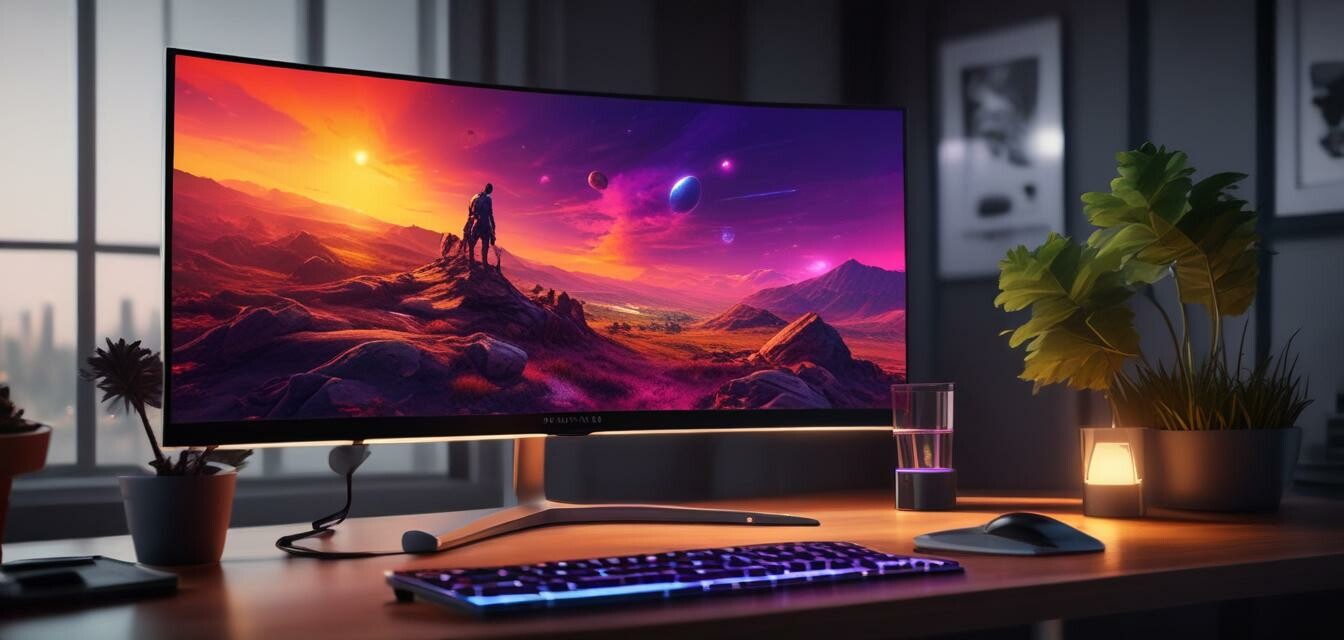
Choosing an OLED Monitor for Streaming and Content Creation
Key Takeaways
- Look for high color accuracy and wide color gamut to ensure your content looks great.
- Connectivity options are crucial—ensure the monitor has HDMI, DisplayPort, and USB-C ports.
- Consider the screen size and resolution based on your workspace and content creation needs.
- Refresh rates and response times matter for a smoother streaming experience.
- Don’t forget features like screen adjustability and eye care technology for prolonged use.
Streaming and content creation have become more popular than ever, and one crucial factor that plays a significant role in the overall experience is the monitor you choose. When selecting an OLED monitor, particular attention must be paid to aspects such as color accuracy, screen size, and connectivity options. This guide will help you navigate through the critical factors in choosing the right OLED monitor for your streaming and content creation needs.
Why choose an OLED monitor for streaming and content creation?
OLED monitors are renowned for their stunning color reproduction, deep blacks, and wide viewing angles. These features make them ideal for artistic endeavors and content dissemination. Below are some benefits of using an OLED monitor:
- Exceptional Color Accuracy: Perfect for video editing, photo editing, and gaming, OLED monitors provide vibrant colors that remain consistent regardless of the content you're working with.
- Contrast Ratio: The ability to display pure blacks enhances the viewing experience, particularly in darker scenes.
- Wide Viewing Angles: OLED screens maintain excellent color accuracy and brightness even when viewed from the side, making them great collaborative tools.
Key features to consider
Color accuracy
For content creators, color accuracy is paramount. You want a monitor that can reproduce colors in line with industry standards like sRGB, Adobe RGB, and DCI-P3. Below is a comparison table of color accuracy standards:
| Color Space | Ideal Use | Accuracy Percentage |
|---|---|---|
| sRGB | Web content | 100% |
| Adobe RGB | Print media | 99% |
| DCI-P3 | Film production | 98% |
Connectivity options
For a seamless workflow, it is essential to have various connectivity options. Ensure that your OLED monitor has:
- HDMI ports: Ideal for connecting cameras and gaming consoles.
- DisplayPort: Great for high refresh rates and multiple monitor setups.
- USB-C ports: Useful for charging devices and connecting peripherals.
Screen size and resolution
The choice of screen size and resolution depends on your setup. Below is a breakdown to help you decide:
| Screen Size | Recommended Resolution | Best For |
|---|---|---|
| 27 inches | 1440p | General content creation |
| 32 inches | 4K | Professional editing and streaming |
| 34 inches (Ultrawide) | 1440p or 4K | Multitasking and immersive gaming |
Additional features to enhance your experience
When choosing an OLED monitor, consider the following features for optimal performance:
- Refresh Rate: A refresh rate of at least 120Hz is ideal for smooth streaming and gaming experiences.
- Response Time: Look for low response times (around 1ms) to minimize motion blur.
- Ergonomics: Adjustable heights, tilt, and swivel features enhance comfort during long hours of use.
- Eye Care Features: Technologies like blue light filtering and flicker-free displays help reduce eye strain.
Conclusion
Choosing the right OLED monitor is crucial for anyone focused on streaming and content creation. As you weigh your options, prioritize color accuracy, connectivity options, and additional features that suit your workflow. With the insights from this guide, you should be well-equipped to find an OLED monitor that elevates your gaming and content creation experience.
Pros
- Stunning color accuracy
- High contrast ratio
- Wide viewing angles
- Multiple connectivity options
Cons
- Often more expensive than traditional monitors
- Potential burn-in issues with static images
- Requires proper calibration for best results